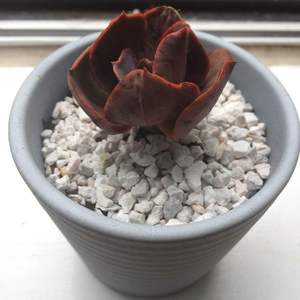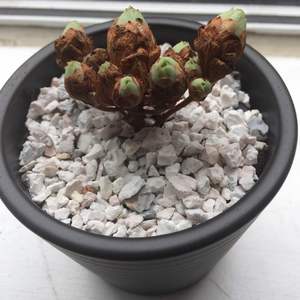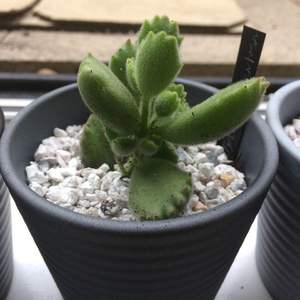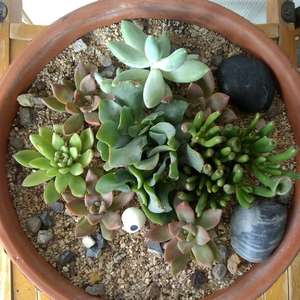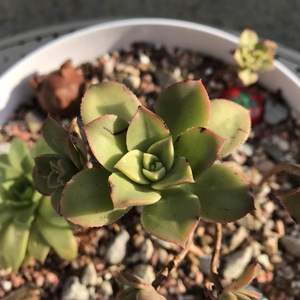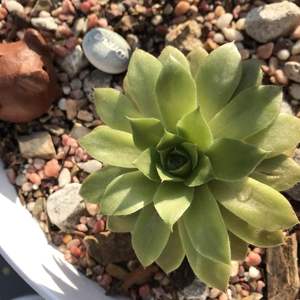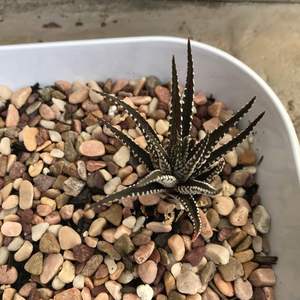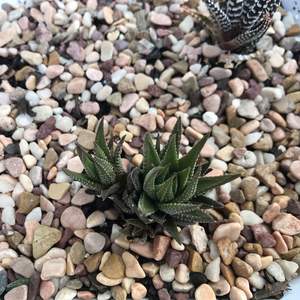求助
Khim_ali
2018年07月16日

Im new to propagating succulents and its day 5 but the plant didnt go well. I wait till a pedal falls off or I take the bottom ones and twist it to get them off. I tried drying it in my house for 2-3 days on top of soil with some sunlight by the window but the plant began to rot and get all soft/mushy so I tried doing it outside drying them for 2-3 days then misting them with water but my plant has turned black can someone gove me tips on propagating ive been trying but its not going well. Also when propagating is it norml for the plant to get soft and mushy?

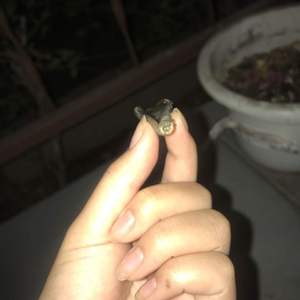


0
0
Khim_ali:@Liz Lynch okay I’ll give t a few more days , thank you!!
Liz Lynch:Give it a few more days.... but when you say soft - how soft? Softness usually means to much water 😊
Liz Lynch:I reckon this still may have potential to go
文章
Miss Chen
2018年07月11日

Haworthia are delightful little succulents that form very attractive and singular small houseplants. Generally easy to grow, the same best practices that yield healthy aloe and echeveria plants will also produce beautiful Haworthia.

In terms of appeal, these small, low growing plants form rosettes of fleshy green leaves that are generously covered with white, pearly warts or bands, giving them a distinctive appearance. Just like other succulents, these plants appreciate bright light, adequate moisture in the summer, and relatively drier conditions in the winter. Avoid overwatering, but don’t let them dry out too much.
Growing Conditions
Light: Bright light, but not direct sunlight. These grow in similar conditions to other succulents. White or yellow leaves usually signify too much sun.
Water: Water evenly and generously in the summer, letting the soil media dry out between waterings. In the winter, reduce watering to every other month. Never allow water to collect in the rosette.
Temperature: Warmer summers but cool in the winter (down to 50 degrees F).
Soil: Use a cactus mix or very fast-draining potting soil mixed with sand.
Fertilizer:Fertilize during the summer growing season with a cactus fertilizer. Don't feed during the winter.
Propagation
Haworthia can be propagated at repotting time using offsets from the mother plant. When taking offsets, use a sharp knife or snippers and cut as close to the mother stem as possible to include as many roots as possible, then allow the offset to dry briefly before repotting it (similar to cuttings from other succulents). Pot the offsets in a small pot, using the same soil as the mother plant, put it in a warm, bright spot, and make sure to adequately water.
Repotting
Haworthia are small (usually remaining between 3" and 5" in height) and relatively slow-growing. They are often grown in small clusters in wide, shallow dishes. Over time, clusters will naturally enlarge as the mother plant sends off small plantlets.
When the cluster has outgrown its dish, repot in the spring or early summer into a new wide and shallow dish with fresh potting soil. This is also the time to take offsets for propagation.

Varieties
There are about 80 species of Haworthia, but their classification can be complex. The main difference between the common species is the size of the leaves and the orientation of the white markings on the leaves. H. margaritifera has warty white projections on the leaves, while H. fasciata features horizontal white stripes and is sometimes called the zebra plant.
Some of the species, such as H. bolusii have "tufted" edges to the leaves, while H. attenuata features long, pointed green leaves. In general, the best advice is to buy the most attractive variety based on leaf form and markings, as they all have similar cultural requirements.
Grower's Tips
Haworthia are not considered difficult houseplants to grow—if you can keep a pot of aloe alive on a windowsill, chances are you can do the same with a dish of Haworthia. As with all succulents, the most dangerous situation is too much water, since they should never be allowed to sit in water under any circumstances.
At the same time, these little decorative plants can be grown in interesting containers such as teacups and even miniature baby shoes. If you're given a Haworthia in such a container, make sure the container had adequate drainage. If it doesn't, it might be a good idea to pop the plant out of its container and add a layer of gravel to the bottom to reduce the wicking action of the soil above.
Finally, look out for sunburned spots on your plants.

In terms of appeal, these small, low growing plants form rosettes of fleshy green leaves that are generously covered with white, pearly warts or bands, giving them a distinctive appearance. Just like other succulents, these plants appreciate bright light, adequate moisture in the summer, and relatively drier conditions in the winter. Avoid overwatering, but don’t let them dry out too much.
Growing Conditions
Light: Bright light, but not direct sunlight. These grow in similar conditions to other succulents. White or yellow leaves usually signify too much sun.
Water: Water evenly and generously in the summer, letting the soil media dry out between waterings. In the winter, reduce watering to every other month. Never allow water to collect in the rosette.
Temperature: Warmer summers but cool in the winter (down to 50 degrees F).
Soil: Use a cactus mix or very fast-draining potting soil mixed with sand.
Fertilizer:Fertilize during the summer growing season with a cactus fertilizer. Don't feed during the winter.
Propagation
Haworthia can be propagated at repotting time using offsets from the mother plant. When taking offsets, use a sharp knife or snippers and cut as close to the mother stem as possible to include as many roots as possible, then allow the offset to dry briefly before repotting it (similar to cuttings from other succulents). Pot the offsets in a small pot, using the same soil as the mother plant, put it in a warm, bright spot, and make sure to adequately water.
Repotting
Haworthia are small (usually remaining between 3" and 5" in height) and relatively slow-growing. They are often grown in small clusters in wide, shallow dishes. Over time, clusters will naturally enlarge as the mother plant sends off small plantlets.
When the cluster has outgrown its dish, repot in the spring or early summer into a new wide and shallow dish with fresh potting soil. This is also the time to take offsets for propagation.

Varieties
There are about 80 species of Haworthia, but their classification can be complex. The main difference between the common species is the size of the leaves and the orientation of the white markings on the leaves. H. margaritifera has warty white projections on the leaves, while H. fasciata features horizontal white stripes and is sometimes called the zebra plant.
Some of the species, such as H. bolusii have "tufted" edges to the leaves, while H. attenuata features long, pointed green leaves. In general, the best advice is to buy the most attractive variety based on leaf form and markings, as they all have similar cultural requirements.
Grower's Tips
Haworthia are not considered difficult houseplants to grow—if you can keep a pot of aloe alive on a windowsill, chances are you can do the same with a dish of Haworthia. As with all succulents, the most dangerous situation is too much water, since they should never be allowed to sit in water under any circumstances.
At the same time, these little decorative plants can be grown in interesting containers such as teacups and even miniature baby shoes. If you're given a Haworthia in such a container, make sure the container had adequate drainage. If it doesn't, it might be a good idea to pop the plant out of its container and add a layer of gravel to the bottom to reduce the wicking action of the soil above.
Finally, look out for sunburned spots on your plants.
2
4
求助
Grace W
2018年07月10日

I got some new succulents yesterday, but I’m not entirelu sure what species they are. I attached some pictures here, so if anybody knows what kind they are, it would be appreciated.
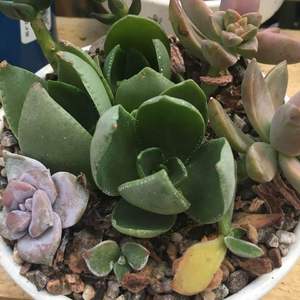
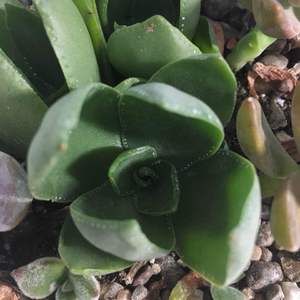

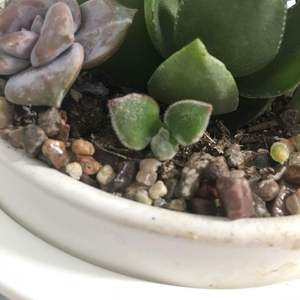

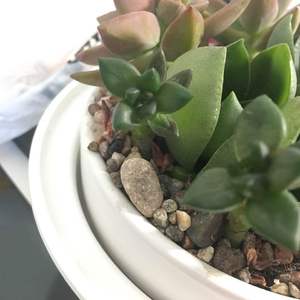






1
0
文章
Miss Chen
2018年07月10日

Succulents seem custom-made for indoor gardeners. These hardy plants can thrive for long periods in poor conditions. But given proper care, succulents are some of the most beautiful plants in the world. Learn how to care for succulents plus a few varieties we love.

01How to Grow Healthy Succulents
Succulents are some of the most rewarding plants for indoor gardeners. They're tough, beautiful, and have interesting and varied foliage. Read our best tips for caring for these plants.

02Growing Aloe
Aloe is one of the most popular succulents, grown for both its beauty and health benefits.

03Growing Desert Rose (Adenium obesum)
Desert rose is a striking plant with beautiful flowers. Beware the sap, however, which can be caustic.

04Growing Sedum Morganianum (Burro's Tail)
These beautiful succulents are trailing plants that form long, striking "tails" of tear-drop shaped leaves.

05Growing Echeveria
One of the more popular varieties, Echeveria succulents grow in tight rosettes of overlapping leaves. They are perfect indoor plants: small, beautiful and easy to care for.

01How to Grow Healthy Succulents
Succulents are some of the most rewarding plants for indoor gardeners. They're tough, beautiful, and have interesting and varied foliage. Read our best tips for caring for these plants.

02Growing Aloe
Aloe is one of the most popular succulents, grown for both its beauty and health benefits.

03Growing Desert Rose (Adenium obesum)
Desert rose is a striking plant with beautiful flowers. Beware the sap, however, which can be caustic.

04Growing Sedum Morganianum (Burro's Tail)
These beautiful succulents are trailing plants that form long, striking "tails" of tear-drop shaped leaves.

05Growing Echeveria
One of the more popular varieties, Echeveria succulents grow in tight rosettes of overlapping leaves. They are perfect indoor plants: small, beautiful and easy to care for.
1
2
文章
Miss Chen
2018年07月09日

Plant Taxonomy:
Plant taxonomy classifies aloe vera plant as Aloe barbadensis.

Plant Type:
A. barbadensis grows as perennial in tropical and sub-tropical regions, where the leaves of these clump-forming succulents are evergreen. Typically found in the wild in hot, dry climates, they're a natural for desert landscaping.
Characteristics:
While capable of achieving a height of 3 feet, aloe vera plants more typically mature to be 1 or 2 feet tall. If you grow these tropical plants indoors in containers, they most likely will remain on the shorter end of the height spectrum. When grown outdoors in warm climates, mature plants will produce yellow or orange flower heads on tall stalks. The sword-shaped, often grayish-green leaves grow in rosettes and are sometimes studded with white flecks. Short teeth run up the edges of the leaves.
Planting Zones for Aloe Vera Plants:
Grow these succulents in planting zones 9, 10 or 11. They are thought to be indigenous to Africa.
Sun and Soil Requirements:
Grow in full sun to partial shade and in a well-drained soil. These succulents are drought-resistant plants once established.
Care for Aloe Vera Plants:
The key to growing these cactus-like plants is providing good drainage. When using aloe vera as a landscape plant, incorporate sand into the soil. For potting, be sure to place crushed stone at the bottom of the container, which should, of course, have a drainage hole in its bottom. Aloe vera plant is relatively dormant in winter, meaning it will need very little water at that time. Even during the summer, be careful not to over-water established specimens. If the leaves show signs of browning, consider cutting back on sun exposure. As a houseplant, provide bright light.
Medicinal Uses for Aloe Vera Plants:
Famous for its soothing medicinal properties, potted A. barbadensis is kept as a houseplant by many people who treat it as "living first aid." E.g., when they burn a finger, they'll break off a lower leaf and rub the juice on the burn. Removing the leaf does no damage to the plant. This medicinal wonder's motto is, "Doctor, heal thyself": the wound where the leaf was removed heals quickly.

Where to Use Aloe Vera Plants:
As a potted plant, it may be treated as a houseplant to be used in interiorscaping or installed on patios, decks, etc. In the landscape (in zones 9, 10 and 11), its need for good drainage makes it an excellent candidate for rock gardens. These drought-tolerant succulents are also a natural for xeriscape design. Propagation is easy: just break off the offsets, allow them to make contact with the ground (sand is a preferred rooting medium) and watch them root!
Meaning of the Name:
There are many types of aloes in the world. Aloe vera plant is just one type, although it is, to be sure, the best known of the aloes. Perhaps that's why Linnaeus referred to this aloe as vera (Latin for "true"). The term stuck as part of the common name, but for the scientific name, many now prefer the designation of Philip Miller, a Scottish botanist: Aloe barbadensis. Miller's specific epithet, barbadensis means "of Barbados." That's a rather misleading name since most experts do not believe the plants to be native to Barbados (asserting, instead, that they were brought there by the Spaniards).
As for the genus name, Aloe, the Online Etymology Dictionary states that the word derives from the Greek, aloe, a translation of the Hebrew name, ahalim. The plant is, indeed, mentioned in the Bible.
Plant taxonomy classifies aloe vera plant as Aloe barbadensis.

Plant Type:
A. barbadensis grows as perennial in tropical and sub-tropical regions, where the leaves of these clump-forming succulents are evergreen. Typically found in the wild in hot, dry climates, they're a natural for desert landscaping.
Characteristics:
While capable of achieving a height of 3 feet, aloe vera plants more typically mature to be 1 or 2 feet tall. If you grow these tropical plants indoors in containers, they most likely will remain on the shorter end of the height spectrum. When grown outdoors in warm climates, mature plants will produce yellow or orange flower heads on tall stalks. The sword-shaped, often grayish-green leaves grow in rosettes and are sometimes studded with white flecks. Short teeth run up the edges of the leaves.
Planting Zones for Aloe Vera Plants:
Grow these succulents in planting zones 9, 10 or 11. They are thought to be indigenous to Africa.
Sun and Soil Requirements:
Grow in full sun to partial shade and in a well-drained soil. These succulents are drought-resistant plants once established.
Care for Aloe Vera Plants:
The key to growing these cactus-like plants is providing good drainage. When using aloe vera as a landscape plant, incorporate sand into the soil. For potting, be sure to place crushed stone at the bottom of the container, which should, of course, have a drainage hole in its bottom. Aloe vera plant is relatively dormant in winter, meaning it will need very little water at that time. Even during the summer, be careful not to over-water established specimens. If the leaves show signs of browning, consider cutting back on sun exposure. As a houseplant, provide bright light.
Medicinal Uses for Aloe Vera Plants:
Famous for its soothing medicinal properties, potted A. barbadensis is kept as a houseplant by many people who treat it as "living first aid." E.g., when they burn a finger, they'll break off a lower leaf and rub the juice on the burn. Removing the leaf does no damage to the plant. This medicinal wonder's motto is, "Doctor, heal thyself": the wound where the leaf was removed heals quickly.

Where to Use Aloe Vera Plants:
As a potted plant, it may be treated as a houseplant to be used in interiorscaping or installed on patios, decks, etc. In the landscape (in zones 9, 10 and 11), its need for good drainage makes it an excellent candidate for rock gardens. These drought-tolerant succulents are also a natural for xeriscape design. Propagation is easy: just break off the offsets, allow them to make contact with the ground (sand is a preferred rooting medium) and watch them root!
Meaning of the Name:
There are many types of aloes in the world. Aloe vera plant is just one type, although it is, to be sure, the best known of the aloes. Perhaps that's why Linnaeus referred to this aloe as vera (Latin for "true"). The term stuck as part of the common name, but for the scientific name, many now prefer the designation of Philip Miller, a Scottish botanist: Aloe barbadensis. Miller's specific epithet, barbadensis means "of Barbados." That's a rather misleading name since most experts do not believe the plants to be native to Barbados (asserting, instead, that they were brought there by the Spaniards).
As for the genus name, Aloe, the Online Etymology Dictionary states that the word derives from the Greek, aloe, a translation of the Hebrew name, ahalim. The plant is, indeed, mentioned in the Bible.
2
2
文章
Miss Chen
2018年07月08日


01Portulaca Picture
Plus Agave, Yucca
Cacti and succulents come in a variety of shapes and sizes. Some of the tiny ones are best-suited to miniature garden arrangements, while giants such as the saguaro would be too big to be displayed suitably in some front yards! I use the terminology "cacti and succulents" here merely out of deference to popular convention. All cacti are, in fact, considered to be succulents (but not all succulents are cacti). View my pictures of cacti and succulents for some examples.
I include photos of the succulents known as agave and yucca in this gallery. Although often thought of in connection with cacti, agave and yucca belong to a group of plants distinct from cacti.
Succulents are known for their fleshy foliage. But other plants, as well, bear such "leathery" leaves, including:
Montauk daisy
Bitterroot
Portulaca plants (also commonly called "moss rose") are annuals....
However, these succulents reseed readily. Portulacas are a good choice for areas with poor soils, and they can stand up to a pounding sun all day long. They are also popular in hanging baskets, their prostrate growth habit allowing them to cascade down the side of a container. The different colors they come in look wonderful mixed together.
The edible weed named "purslane" is another type of portulaca.

02Pictures of Cacti and Succulents: Hen and Chicks
Mat-forming succulents, hen and chicks produces clusters of rosettes....
The parent rosettes are the "hens," and the smaller rosettes that spring from them are the "chicks." This low-growing (4") perennial will quickly spread to 2' or more in width. Although grown for its leaves, hen and chicks plant does flower, occasionally.

03Autumn Joy Stonecrop
Unlike the succulent in the prior picture, Autumn Joy stonecrop is very much grown for its flowers....
Sedum 'Autumn Joy wants full sun to partial shade and a well-drained soil. A popular plant for xeriscaping, Autumn Joy is a good candidate for rock gardens.

04Frosty Morn Sedum
Some sedums bear variegated leaves....
The name of this sedum cultivar, 'Frosty Morn,' refers to the white tinges on its otherwise green leaves. 'Frosty Morn' is grown primarily for its foliage.

05Angelina Sedum Photo
The gold flowers that emerge in spring on Angelina sedum can be a nice bonus added to the appeal of its chartreuse foliage, as long as you don't mind the rather gangly stems they bloom on....
But for me, it's the chartreuse foliage of these succulents that is the main draw for growing them. I like both its color and its feel. Angelina sedum will spread over time, so if you make it a point to avoid growing plants that fail to receive the highest marks for being well-behaved, you may not wish to grow it.
Mass Angelina sedum plants together for use as a groundcover or short perennial border.
1
1
求助
dxstxnxx
2018年06月30日

HELP ID:
I recently bought this collection of succulents from my local swap meet and was ultimately attracted to the low-growing grass-like succulents as shown in my second picture. Does anyone recognize it? and/or have tips for caring for it? your help is very much appreciated 🙂
#helpmerecognizethissucculent
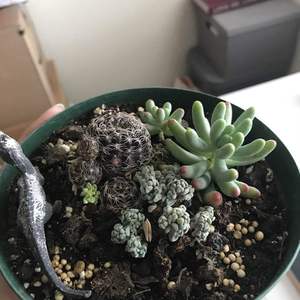
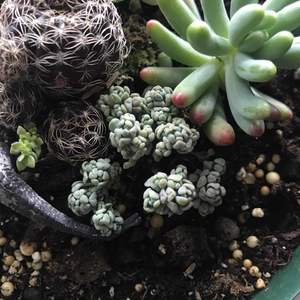
I recently bought this collection of succulents from my local swap meet and was ultimately attracted to the low-growing grass-like succulents as shown in my second picture. Does anyone recognize it? and/or have tips for caring for it? your help is very much appreciated 🙂
#helpmerecognizethissucculent


1
0
dxstxnxx:@Fion thank you! 😊
Fion:Sedum dasyphyllum var. dasyphyllum(姬星美人)😁
文章
Miss Chen
2018年06月30日

The Aeonium genus includes about 35 succulent plants, mostly hailing from the Canary Islands. Members of the Crassulaceae family, these generally follow the growth recommendations for most succulents: lots of light, perfect drainage, and not too much water. Like other succulents, these are also highly prized for their beautiful foliage. On the most popular variety, the leaves are held on a nearly bare branch and grow in attractive rosettes that turn a deep, burgundy red in the summer time.

They are not especially common in cultivation, and if do see one, it's likely to be an immature plant. When they are young, it's easy to confuse Aeoniums with the closely related Echeverias, which are much more common in the nursery trade. It's easier, however, to tell adult plants with adequate light as the most popular species offer their spectacular leaf coloring.
Growing Conditions
Light: They like plenty of bright light, but dislike intense direct light, especially in the summer. These plants are not very tolerant of heat, so try to avoid locations where they are exposed to harmful direct heat radiation, whether from the sun or a light.
Water: When grown in containers, Aeonium like a regular supply of moisture during the growing season, which will typically be in the summer time. It's best to let the plants dry slightly between waterings, but because Aeonium have small roots, they are a bit less drought tolerant than other succulents and appreciate a steady supply of light water with good drainage.
Fertilizer: A typical cactus fertilizer can help them look their best, especially in older plants where the potting media is getting older and lost some of its nutrients.
Soil: A light, fast-draining potting soil is perfect. Cactus soils allow more latitude with watering because they hold less water, but regular potting soils can also be used.
Propagation
Many kinds of Aeonium do not clump as freely as more familiar succulents, which partially explains why they are less common in the trade (propagation is somewhat harder). However, they do root readily from leaf cuttings. Take a single leaf, allow it to dry out slightly, then place it in a seedling potting soil and keep barely moist and warm. New growth will eventually emergy. In some varieties, it's only possible to propagate from seed; this is more typical of the plants that do not branch but grow only single rosettes.
Repotting
These will not need frequent repotting. They are usually weakly rooted, so when you're repotting, be careful not to damage the roots or fragile leaves. Repot in the beginning of the growing season and keep in a warm, bright place until new growth begins to emerge.
Varieties
Collectors enjoy finding rarer Aeoniums, which grow in fantastic leaf forms and colors. Here are a few types of Aeonium that you might see:

A. arboreum. A fairly common species with mint green colored rosettes and branching growth habitate. This plant grows up to 5 feet and is easily propagated from leaf or branch cuttings. It has been extensively hybridized.
A. arboreum 'Atropurpureum'. This variety of the A. arboreum features the same green leaves that transition to purple or burgendy when exposed to sunlight. This is a very beautiful and relatively common Aeonium, compared to some of the more esoteric plants.
A arboreum 'Zwartkop.' Similar to the other two varieties, with the exception being that its leaves are dark purple and almost black. This plant is exceptionally beautiful when grown in masses.
Grower's Tips:
Aeonium are wonderful succulents that can really add visual interest to a succulent collection. They are relatively cold and heat sensitive, however, and do best in a faily temperate range. The same is true for watering: they dislike intense droughts or too much water. Ideally, Aeonium thrive in a Mediterranean climate, with mild winters and mild summers, and regular but not overwhelming water. Aeonium is vulnerable to mealybugs and aphids.

They are not especially common in cultivation, and if do see one, it's likely to be an immature plant. When they are young, it's easy to confuse Aeoniums with the closely related Echeverias, which are much more common in the nursery trade. It's easier, however, to tell adult plants with adequate light as the most popular species offer their spectacular leaf coloring.
Growing Conditions
Light: They like plenty of bright light, but dislike intense direct light, especially in the summer. These plants are not very tolerant of heat, so try to avoid locations where they are exposed to harmful direct heat radiation, whether from the sun or a light.
Water: When grown in containers, Aeonium like a regular supply of moisture during the growing season, which will typically be in the summer time. It's best to let the plants dry slightly between waterings, but because Aeonium have small roots, they are a bit less drought tolerant than other succulents and appreciate a steady supply of light water with good drainage.
Fertilizer: A typical cactus fertilizer can help them look their best, especially in older plants where the potting media is getting older and lost some of its nutrients.
Soil: A light, fast-draining potting soil is perfect. Cactus soils allow more latitude with watering because they hold less water, but regular potting soils can also be used.
Propagation
Many kinds of Aeonium do not clump as freely as more familiar succulents, which partially explains why they are less common in the trade (propagation is somewhat harder). However, they do root readily from leaf cuttings. Take a single leaf, allow it to dry out slightly, then place it in a seedling potting soil and keep barely moist and warm. New growth will eventually emergy. In some varieties, it's only possible to propagate from seed; this is more typical of the plants that do not branch but grow only single rosettes.
Repotting
These will not need frequent repotting. They are usually weakly rooted, so when you're repotting, be careful not to damage the roots or fragile leaves. Repot in the beginning of the growing season and keep in a warm, bright place until new growth begins to emerge.
Varieties
Collectors enjoy finding rarer Aeoniums, which grow in fantastic leaf forms and colors. Here are a few types of Aeonium that you might see:

A. arboreum. A fairly common species with mint green colored rosettes and branching growth habitate. This plant grows up to 5 feet and is easily propagated from leaf or branch cuttings. It has been extensively hybridized.
A. arboreum 'Atropurpureum'. This variety of the A. arboreum features the same green leaves that transition to purple or burgendy when exposed to sunlight. This is a very beautiful and relatively common Aeonium, compared to some of the more esoteric plants.
A arboreum 'Zwartkop.' Similar to the other two varieties, with the exception being that its leaves are dark purple and almost black. This plant is exceptionally beautiful when grown in masses.
Grower's Tips:
Aeonium are wonderful succulents that can really add visual interest to a succulent collection. They are relatively cold and heat sensitive, however, and do best in a faily temperate range. The same is true for watering: they dislike intense droughts or too much water. Ideally, Aeonium thrive in a Mediterranean climate, with mild winters and mild summers, and regular but not overwhelming water. Aeonium is vulnerable to mealybugs and aphids.
0
1
文章
Miss Chen
2018年06月30日


01.Grow These Succulents Almost Anywhere
It seems like pretty much everyone has developed a thirst for succulents—those plants with exotic shapes and diverse forms that are easy to maintain and create a bold statement wherever they grow. Even beginning gardeners are tempted to buy one or two out of curiosity; with some getting hooked after seeing how beautiful and manageable they are.
Many of the uninitiated take a look at a bed of succulents and refer to them as Hens and Chicks (Sempervivums). But there are hundreds—thousands—of others that aficionados collect, trade, share and discuss in person and online. Some people love them because they are so easy to propagate—just take a snip, let callous over, and plant in the ground or in a container.
In regions that have been affected by drought or practice water-wise landscaping, succulents are a gorgeous and simple addition to the garden. They also thrive on patios, decks, and balconies, and make smart choices for pool area landscaping.
Planting the Right Succulents
Things you should know before you get started:
Succulents require more water in summer. If you live in a region with little rainfall, plan to water in-ground succulents once a week. Those in containers will require water about three times per week.
Reduce irrigation in fall and winter so that succulents can withstand lower temperatures. Soggy soil and soft, new growth make succulents more susceptible to damage from freezes.
What grows best in your region? If you aren't sure, buy from local suppliers: nurseries, succulent plant groups, botanical gardens, etc. This will ensure that they will survive.
While all-succulent gardens are attractive, start out by working them into your existing landscape. Discover some of the best companion plants for succulents.
Learn more about these easy-to-care-for beauties, including how to pronounce them (so you can impress everyone). And remember: cactus are succulents, but succulents are not cactus. Species are presented alphabetically.

02.Aeonium
Pronunciation: a-OH-nee-um
Traits: These natives of North Africa's Canary Islands prefer more moisture than most succulents. Darker ones, like the purple/black Aeonium 'Zwartkop', can tolerate sun more than the lighter varieties. Many aeoniums are in the forms of flowers and rosettes, making them especially pretty in container gardens or even cut bouquets or arrangements.
Try These:
Black Aeonium: Aeonium arboreum 'Zwartkop'
A. artropurpureum
Kiwi Aeonium: A.decorum "Kiwi'
Canary Island aeonium: A. canariense
Sunburst Aeonium: A. 'Sunburst'
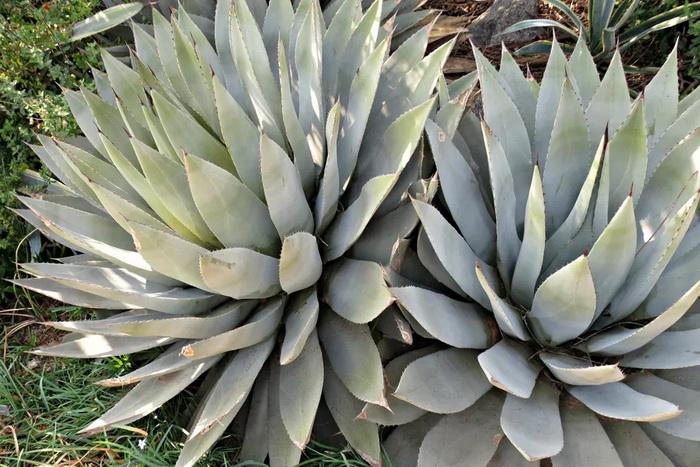
03.Agave
Pronunciation: a-GAH-vee
Traits: Native to the Americas, in-ground specimens grow more quickly and produce more blooms than their cousins confined to containers. Easily identifiable by their strong forms and large sizes—they make striking landscape plants. Leaves can be smooth, sword-shaped, toothed, or carried in rosettes. Blooms are infrequent but can be magnificent and huge--sometimes 14 feet or more. After flowering the larger agaves die, but offshoots or pups usually form before this occurs.
Try These:
Tuxedo Agave: Agave americana
Fox Tail Agave: A. attenuata; 'Kara's Stripes'
A. 'Blue Flame'
A. 'Cream Spike'
A. filifera
A. lopantha 'Quadricolor'
Parry's Agave or Artichoke Agave: A. parryi
Butterfly Agave: A. potatorum 'Kissho Kan' or 'Kichi-Jokan'
Queen Victoria Agave: A. victoriae-reginae

04.Aloe
Pronunciation: AL-oh
Traits: Native to Africa, the Mediterranean, Madagascar, aloes have fleshy, pointed leaves often arranged in rosettes that resemble agaves. Aloes, however, have showy flowers that bloom regularly, with the biggest display of flowers from February to September. Some blooms are tubular shaped and come in shades of orange, red, or yellow, while others are bicolor.
Aloes can be just a few inches high to as tall as trees, with leaves that are either smooth, bumpy, or prickly. It's those leaves that help funnel water down to the plant's crown, keeping it moist and succulent. Aloes prefer more water than agaves and other succulents. Their roots are fairly close to the surface, making them ideal next to houses or near pools.
Try These:
Aloe africana
A. arborescens
A. plicatilis
A. striata
A. vera

05.Crassula
Pronunciation: KRASS-oo-la
Traits: Native to South Africa, this large genus features small-to-medium succulents that have fleshy leaves arranged in a variety of patterns. Some crassula have branching stems, while others have are low-growing plants with dense foliage that are often good ground covers.
Try These:
Jade: Crassula ovata
Crassula argentea
C. falcata
C. cooperi
C. deltoidea

06.Dasylirion
Pronunciation: das-uh-LIH-ree-uhn
Traits: Although they more closely resemble a palm, this species surprises some people when they learn that they are actually succulents. Popular in xeriscape gardens, they have a southwestern look, and many have green, greyish, or blue-green strap-like leaves with small, sharp teeth that line the leaf edges. Small trunks can become woody, which makes them appear even less like succulents.
These striking succulents like some water, but will grow in desert and drought-tolerant gardens and make attractive container plants.
Try These:
Mexican Grass Tree: Dasylirion longissimum or D. quadrangulatum
Desert Spoon: D. wheelerii
Texas Sotol D. texanum
0
2
文章
Miss Chen
2018年06月29日


1.Ice Plants
Ice plants are an interesting genus of succulents, with daisy-like flowers. There is a good amount of variety among ice plants; some are low growing spreaders, others become bushy subshrubs. There are over 150 species in this genus from southern Africa. Most are easy growers that bloom freely. The botanical name, Lampranthus, is from the Greek words "Lampros" (bright) and anthos (flower).
Leaves: The stocky leaves grow in pairs and can be cylindrical or almost triangular. They are short, very succulent and often blue-green.
Flowers: Daisy-like flowers with thin petals that only open in the sun. Different species bloom in vivid shades of yellow, orange, pink and red. The flowers form near the stem tips. Some varieties bloom over a long period, others only a few weeks.
Botanical Name
Lampranthus species and hybrids
Common Names
Ice Plant. You may see individual species labeled as Ice Plants and some have quantifiers like Trailing Ice Plant. It can be confusing. If you are looking for a specific plant, you would be wise to have the botanical name.
Cold Hardiness
Hardiness will vary with the species and variety, but most are only perennial in USDA Hardiness Zones 8 - 10. Some species can tolerate a light frost, but despite their name, prolonged periods of cold, damp conditions will cause them to rot. Gardeners in colder areas can grow them as annuals or houseplants.
Sun Exposure
All varieties of ice plant grow and bloom best in full sun.
Mature Plant Size
The size will vary among the species, but most of the commonly grown ice plant varieties remain 2 ft. (60 cm) tall or lower, with a spreading habit.
Bloom Time
Many ice plants put on their best show in spring, with sporadic repeat blooms throughout the season, however, a few, like Lampranthus spectabilis, bloom all summer.
Suggested Varieties of Ice Plant
Lampranthus aurantiacus - Spring blooming, upright plant with bright orange petals around a yellow center. H 2 ft. (60 cm)
Lampranthus coccineus / Redflush Ice Plant - Bright red flowers throughout the season. Somewhat frost tolerant. H 2 ft. (60 cm)
Lampranthus haworthii - Blue-green leaves held up like a candelabra are covered with pink or purple flowers in the spring. Repeat blooms sporadically. H 2 ft. (60 cm)
Lampranthus spectabilis /Trailing Ice Plant- Long blooming in white or purple-pink. Low growing and spreading. H 2 ft. (60 cm)
Design Suggestions Using Ice Plant
Where the plants are hardy, they make a nice ground cover. Ice plants thrive in poor soil and make a wonderful alpine or rock garden plant or tucked in a stone wall. Their spreading habit means they quickly fill a container and spill over, so they are equally nice in hanging baskets and free-standing containers.

2.Growing and Caring for Ice Plants
Ice Plant Growing Tips
Soil: A neutral soil pH is fine, but it is more important to provide sandy, well-draining soil. Plants will rot if left in wet or damp soil for prolonged periods of time.
Planting: Ice Plants can be grown from either seed or cuttings. Seeds need warm temperatures (55 F.) to germinate. Taking cuttings is the fastest method. Make cuttings while the plant is actively growing, from spring to early fall. Cut shoots about 3 - 6 inches long and remove all but the top set of leaves.
Succulent cuttings should be allowed to dry slightly and callus. Leave them out in the air for several hours or overnight. Then root in sandy soil, in containers. Keep the soil evenly moist, until the cutting root. You can tell they have rooted by gently tugging on them. If they offer resistance, they have rooted and can be potted up.
Caring for Ice Plants
Established plants are extremely drought tolerant, however, they do prefer regular weekly watering during the summer. Allow the soil to dry out between waterings in the winter, when they are somewhat dormant.
Flowering is more abundant if container grown plants are fed a balanced fertilizer, according to label directions. In-ground plants should be fed if the soil is poor or if blooming is sparse.
Plants can be divided or repotted in early spring.
Pests & Problems of Ice Plants
Weather is the biggest problem when growing Ice Plants. Few diseases have been reported, but mealy bug and scale can occasionally infest.
0
0
文章
Miss Chen
2018年06月27日

1.Agave Plants
Agave plants are best known as succulent plants with large leaves that end in spiny tips. At first glance, you probably wouldn’t call agave plants rosettes, although they are. So many of the common ones are spiny succulents, with leaves that jut out in often dangerous spikes. There is actually a lot of variety in the agave genus. There are the large, stiff specimens that can grow to 20 feet in diameter. There are also small dish-sized agaves, and agave plants with soft leaves and no spines, although most do have leaves that end in a sharp point.
Leaves: Agaves are all stemless, or nearly so, with strappy, succulent leaves that end in sharp points. Foliage tends toward a blue-green in hardier varieties and a gray-green in warm climate varieties. There are also some that are variegated with gold or white markings.
Flowers: When the plant matures, a tall, flower-stalk grows out of the plant’s center. The flowers are bell-shaped and long-lasting, in shades of white, yellow and green. For most agave species, once the flowers produce the berry seed pods, the plant dies.
Botanical Name
Agave
Common Names
Agave plants are generally referred to as agaves. Agave americana as the Century Plant and that common name is sometimes confusingly used for all species of agave.
Cold Hardiness Zones
Most agave plants are not frost-hardy, but there are some, like Agave parryi, that are reliably perennial to USDA Hardiness Zone 5. However, the majority of them are only hardy in USDA Zones 8 or 9 and up.
Light Exposure
Agave plants need a spot in full sun to partial shade. The hotter the climate, the more shade they can handle.
Mature Size Of Agave Plants
There is a lot of variety in the size of agave plants. They can mature from a few inches tall to 20+ feet in diameter.
Agave Bloom Period
Agaves are grown for their dramatic foliage, not their flowers. That's a good thing because they bloom only once when they are fully mature. That can be anywhere from 5 to 40 years. Agave plants tend to bloom earlier in cultivation than they would in the wild. Most plants die after flowering, however, there are usually small offset plants at the base that can be replanted.
Garden Design Tips for Agave Plants
One large agave is all that is needed to make a sculptural focal point. Just make sure there is plenty of room to walk around it, so no one gets stabbed.
They can also make a nice border grouping, either by planting several of the same species or a tapestry of different varieties. They are textural and sculptural and make a vivid contrast with other plants. Pairing them with ornamental grasses softens their hard edges.
In warm climates, agaves are popular around pools and patios. Their leaves don’t brown and drop frequently and they stay attractive all year. A spineless variety, like the Foxtail Agave (Agave attenuata), is a safe bet around heavily used areas.
Smaller agave plants are excellent for containers, indoor or out.
Suggested Agave Varieties
Agave attenuata - A popular spineless variety also known as the Foxtail or Dragon-Tree Agave. Grows about 4 - 5 feet tall and a bit wider.
Agave parviflora - Leaves have white, graphic markings and curling filaments that give it a hairy look. It only gets about 6 inches tall and blooms in 6 - 8 years with green flowers on a 4 - 6 ft. spike.
Agave tequilana azul - Weber's Blue Agave is used to make a tequila, in Jalisco, Mexico, but it is also a very attractive garden plant, reaching upwards of 6 ft. tall and flowering in 6 - 8 years with a 15 ft. spike of yellow blooms.
Agave victoria-reginae - As the plant matures, the broad leaves cup inward, forming a dome. Reaches a height of about 12 inches. Cream flowers appear in 20 - 30 years
2.Growing and Caring for Agave
Agave Growing Tips
Agaves thrive on neglect. They grow quickly and remain attractive all year. Here are some tips for getting your agave plants established.
Propagation: Since it can take years for an agave plant to produce seed, most are propagated by offsets or tissue culture.
Soil: Agave will tolerate any well-draining soil, but their preference is rocky or sandy soil. They are not particular about soil pH.
Water: Although mature plants are very drought tolerant, when you are first establishing a plant outdoors, water it every 4 - 5 days for the first month. Then once a week, gradually spacing watering to every other week, depending on the weather.
Feeding: Don’t feed agave plants. Agaves seem to take care of themselves. Feeding encourages flowering, which you don’t want to happen too soon, since agave plants die off after flowering.
Growing Agave Plants in Containers
As with many succulent plants, agaves are shallow rooted. You can grow them in any size container, because they don’t need much soil. Use a well-draining soil. You can mix your own with something like 2 - 3 parts potting mix and 1 part gravel.
Re-pot container grown plants every couple of years, with new soil. Agaves can produce sucker roots. If the pot is overly crowded with roots, go ahead and cut the roots back to size. Give the plant a week or so to readjust, before you water it again.
Water about once a week in the summer and monthly in the winter. Wait until the surface of the soil is dry, before watering. In extremely dry conditions your agave may need more frequent water, but agaves are very forgiving.
More on growing agave as a houseplant.
Pests and Problems of Agave Plants
Agaves have very few problems. The agave snout weevil will burrow into the plant’s center to lay its eggs, causing the plant to collapse. Unfortunately, you probably won’t notice this until it’s too late. Remove the plant and check for any remaining grubs.
Agave plants are best known as succulent plants with large leaves that end in spiny tips. At first glance, you probably wouldn’t call agave plants rosettes, although they are. So many of the common ones are spiny succulents, with leaves that jut out in often dangerous spikes. There is actually a lot of variety in the agave genus. There are the large, stiff specimens that can grow to 20 feet in diameter. There are also small dish-sized agaves, and agave plants with soft leaves and no spines, although most do have leaves that end in a sharp point.
Leaves: Agaves are all stemless, or nearly so, with strappy, succulent leaves that end in sharp points. Foliage tends toward a blue-green in hardier varieties and a gray-green in warm climate varieties. There are also some that are variegated with gold or white markings.
Flowers: When the plant matures, a tall, flower-stalk grows out of the plant’s center. The flowers are bell-shaped and long-lasting, in shades of white, yellow and green. For most agave species, once the flowers produce the berry seed pods, the plant dies.
Botanical Name
Agave
Common Names
Agave plants are generally referred to as agaves. Agave americana as the Century Plant and that common name is sometimes confusingly used for all species of agave.
Cold Hardiness Zones
Most agave plants are not frost-hardy, but there are some, like Agave parryi, that are reliably perennial to USDA Hardiness Zone 5. However, the majority of them are only hardy in USDA Zones 8 or 9 and up.
Light Exposure
Agave plants need a spot in full sun to partial shade. The hotter the climate, the more shade they can handle.
Mature Size Of Agave Plants
There is a lot of variety in the size of agave plants. They can mature from a few inches tall to 20+ feet in diameter.
Agave Bloom Period
Agaves are grown for their dramatic foliage, not their flowers. That's a good thing because they bloom only once when they are fully mature. That can be anywhere from 5 to 40 years. Agave plants tend to bloom earlier in cultivation than they would in the wild. Most plants die after flowering, however, there are usually small offset plants at the base that can be replanted.
Garden Design Tips for Agave Plants
One large agave is all that is needed to make a sculptural focal point. Just make sure there is plenty of room to walk around it, so no one gets stabbed.
They can also make a nice border grouping, either by planting several of the same species or a tapestry of different varieties. They are textural and sculptural and make a vivid contrast with other plants. Pairing them with ornamental grasses softens their hard edges.
In warm climates, agaves are popular around pools and patios. Their leaves don’t brown and drop frequently and they stay attractive all year. A spineless variety, like the Foxtail Agave (Agave attenuata), is a safe bet around heavily used areas.
Smaller agave plants are excellent for containers, indoor or out.
Suggested Agave Varieties
Agave attenuata - A popular spineless variety also known as the Foxtail or Dragon-Tree Agave. Grows about 4 - 5 feet tall and a bit wider.
Agave parviflora - Leaves have white, graphic markings and curling filaments that give it a hairy look. It only gets about 6 inches tall and blooms in 6 - 8 years with green flowers on a 4 - 6 ft. spike.
Agave tequilana azul - Weber's Blue Agave is used to make a tequila, in Jalisco, Mexico, but it is also a very attractive garden plant, reaching upwards of 6 ft. tall and flowering in 6 - 8 years with a 15 ft. spike of yellow blooms.
Agave victoria-reginae - As the plant matures, the broad leaves cup inward, forming a dome. Reaches a height of about 12 inches. Cream flowers appear in 20 - 30 years
2.Growing and Caring for Agave
Agave Growing Tips
Agaves thrive on neglect. They grow quickly and remain attractive all year. Here are some tips for getting your agave plants established.
Propagation: Since it can take years for an agave plant to produce seed, most are propagated by offsets or tissue culture.
Soil: Agave will tolerate any well-draining soil, but their preference is rocky or sandy soil. They are not particular about soil pH.
Water: Although mature plants are very drought tolerant, when you are first establishing a plant outdoors, water it every 4 - 5 days for the first month. Then once a week, gradually spacing watering to every other week, depending on the weather.
Feeding: Don’t feed agave plants. Agaves seem to take care of themselves. Feeding encourages flowering, which you don’t want to happen too soon, since agave plants die off after flowering.
Growing Agave Plants in Containers
As with many succulent plants, agaves are shallow rooted. You can grow them in any size container, because they don’t need much soil. Use a well-draining soil. You can mix your own with something like 2 - 3 parts potting mix and 1 part gravel.
Re-pot container grown plants every couple of years, with new soil. Agaves can produce sucker roots. If the pot is overly crowded with roots, go ahead and cut the roots back to size. Give the plant a week or so to readjust, before you water it again.
Water about once a week in the summer and monthly in the winter. Wait until the surface of the soil is dry, before watering. In extremely dry conditions your agave may need more frequent water, but agaves are very forgiving.
More on growing agave as a houseplant.
Pests and Problems of Agave Plants
Agaves have very few problems. The agave snout weevil will burrow into the plant’s center to lay its eggs, causing the plant to collapse. Unfortunately, you probably won’t notice this until it’s too late. Remove the plant and check for any remaining grubs.
0
1
文章
Miss Chen
2018年06月25日

1.Aeonium
The majority of us can't grow Aeoniums year round, in the garden. Don't let that stop you from enjoying them, though. Although they have the familiar rosettes of Hens and Chicks, these quirky succulents are so waxy and shiny, they almost look artificial. In warm climates, they can grow into shrubs. Just imagine coming across a Hens and Chicks at eye level.
As with many of the succulents listed here, Aeonium makes a good houseplant. You can give it a summer vacation outdoors and enjoy it indoors during the winter, it's prime growing season. (USDA Hardiness Zones 9 - 11)
2.Agave
You may be familiar with the giant Agave Americana, with its dangerous, serrated leaves. It's impressive, but not suited to most gardens. There are better choices among the dozens of Agave species. There are even some that can tolerate freezing temperatures.
3.Crassula
With about 350 species in this genus, there's a lot of variety. Jade plants, Crassula ovata, (syn. C. argentea and C. portulaca) are probably the most familiar, but there are also the stacked types, Crassula perforata, that look a little like paper chaines. Colors range from deep green to creams and yellows, silvery gray and shade of red.
In frost free climates, jade plants will form small shrubs. There's are now some very pretty variegated varieties available, which need full sun to retain their colors.
The staked varieties lend themselves to use in hanging containers and over walls. You'll love this little Crassula alpestris. The triangular leaves form stacked pinwheels. They are a pinkish-red during the winter, into spring. At the end of summer, you may get spikes of small white. They can handle some shade and like their soil on the dry side.
4.Echeveria
Another succulent that forms flower-like rosettes atop long stalks. Echeveria resembles Hens and Chicks and can be very ornamental. The leaves are more delicate than they appear and can be easily injured in garden beds. They are perfect for containers and hypertufa.
5.Euphorbia
This is a large genus with a great deal of variety. Not all Euphorbia are succulents but they do all have a milky sap that can be irritating. Be careful about rubbing your eyes after collecting seeds.
The majority of us can't grow Aeoniums year round, in the garden. Don't let that stop you from enjoying them, though. Although they have the familiar rosettes of Hens and Chicks, these quirky succulents are so waxy and shiny, they almost look artificial. In warm climates, they can grow into shrubs. Just imagine coming across a Hens and Chicks at eye level.
As with many of the succulents listed here, Aeonium makes a good houseplant. You can give it a summer vacation outdoors and enjoy it indoors during the winter, it's prime growing season. (USDA Hardiness Zones 9 - 11)
2.Agave
You may be familiar with the giant Agave Americana, with its dangerous, serrated leaves. It's impressive, but not suited to most gardens. There are better choices among the dozens of Agave species. There are even some that can tolerate freezing temperatures.
3.Crassula
With about 350 species in this genus, there's a lot of variety. Jade plants, Crassula ovata, (syn. C. argentea and C. portulaca) are probably the most familiar, but there are also the stacked types, Crassula perforata, that look a little like paper chaines. Colors range from deep green to creams and yellows, silvery gray and shade of red.
In frost free climates, jade plants will form small shrubs. There's are now some very pretty variegated varieties available, which need full sun to retain their colors.
The staked varieties lend themselves to use in hanging containers and over walls. You'll love this little Crassula alpestris. The triangular leaves form stacked pinwheels. They are a pinkish-red during the winter, into spring. At the end of summer, you may get spikes of small white. They can handle some shade and like their soil on the dry side.
4.Echeveria
Another succulent that forms flower-like rosettes atop long stalks. Echeveria resembles Hens and Chicks and can be very ornamental. The leaves are more delicate than they appear and can be easily injured in garden beds. They are perfect for containers and hypertufa.
5.Euphorbia
This is a large genus with a great deal of variety. Not all Euphorbia are succulents but they do all have a milky sap that can be irritating. Be careful about rubbing your eyes after collecting seeds.
0
1


